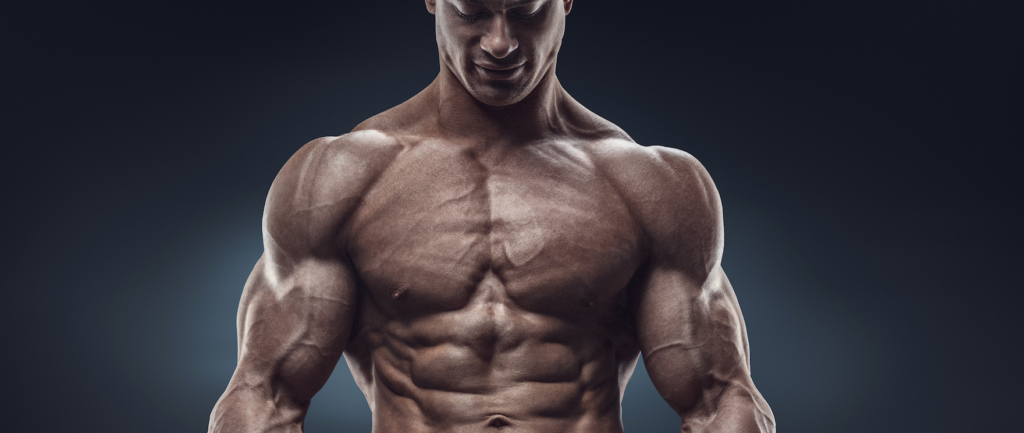
Bullworker’s Steel Bow is one of the newer versions of a classic home fitness device that’s been around for 60+ years.
With portability in mind, the Steel Bow is a smaller, more compact version of the classic isometric strength training machine that’s been helping people get stronger for decades.
And for those of you who aren’t familiar with the old school Bullworker, this device might not look like much – but looks can be deceiving.
It’s all about isometrics, another word for holding a contraction against resistance for a prolonged period… but more on that below.
With updated handles, a smaller footprint, and 5 interchangeable springs, the Steel Bow is effective and easy to travel with.
And Bullworker even throws in a 90 day training guide to get you started off on the right track.
The biggest downside to the Steel Bow is that it isn’t great for targeting the legs, so it’s much more efficient as an upper body machine.
But even so, few portable gym systems (especially ones this affordable) can offer a better workout.
If you’re looking for a portable gym system that can improve upper body strength, it’s unlikely you’ll be disappointed with the Steel Bow, but before you decide, you need to hear the full story.
In this review, I’ll go over everything you need to know about this potent little gym system, including how it compares to the OG.
After reading, you’ll know whether or not it’s worth the investment.
Bullworker’s Steel Bow (affiliate link) is portable, effective, and affordable, making it a great option for traveling or homes with limited workout space. However, it’s better for arm strengthening exercises than leg exercises.
What Exactly Is The Steel Bow Anyway?
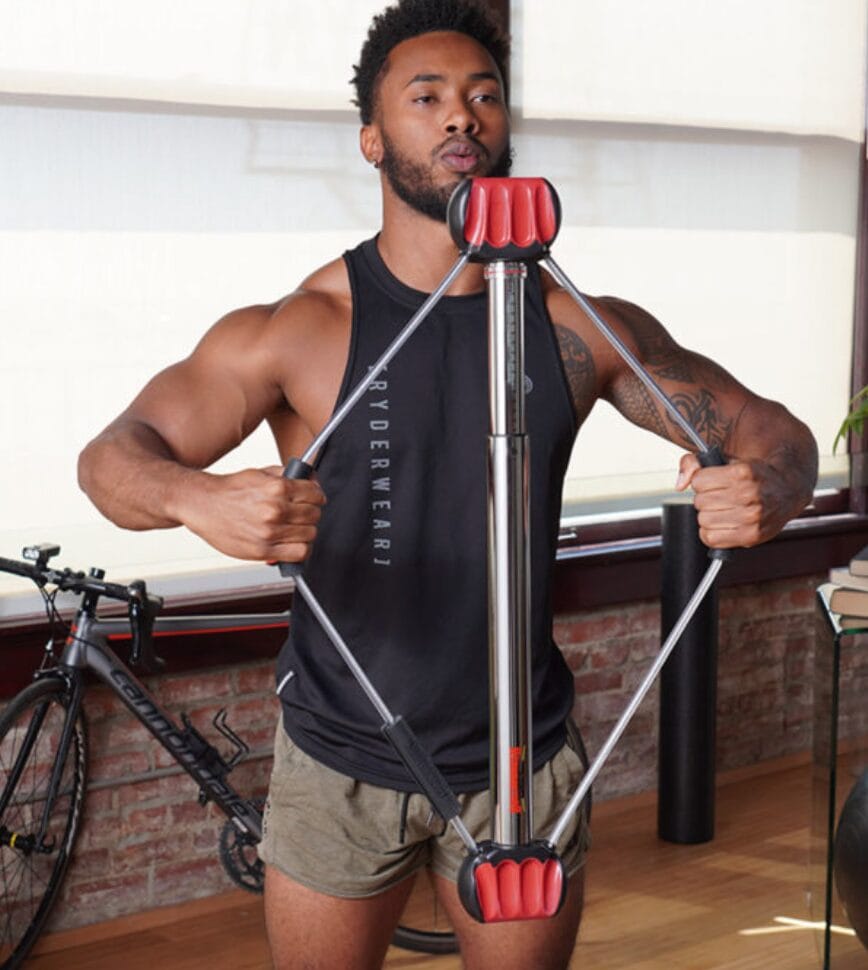
The Bullworker bows have been around since the early ’60’s.
I had no idea what it was at the time, but I remember my parents had one in our basement when I was a kid.
Me and my brothers would take turns trying to see who could push it or pull it the hardest. It was fun to play with, not to mention really difficult to compress.
Turns out they weren’t designed to amuse small children. Instead, they were created by German scientists to utilize isometric exercises to improve strength and overall well-being.
The original Bullworker had two telescoping cylinders in the middle with a spring in the middle.
There were grips on each end and a pair of cables connecting the two ends. You could exercise by pulling on the cables in different manners or pushing the cylinders together.
It was designed with isometrics in mind because of all the research the inventors had conducted on the subject.
They were convinced isometric contractions were the safest and most effective way to gain strength. The general consensus today agrees that isometrics can be a great way to gain strength.
And as a physical therapist I concur – I used isometrics with my patients all the time because they’re effective, low-impact, and safe for pretty much everyone to do.
Oh, and just to make sure we’re all on the same page, an isometric exercise is one in which there is no movement involved.
This means the muscle isn’t shortening or lengthening, but instead holding a position against a force.
Isometrics are nice because they are generally easier on the joints, since there is no repetitive movement involved.
If you have joint pain or range of motion limitations, isometrics can be a great alternative (again, we use them in rehab all the time).
Anyway, the Bullworker bows have been upgraded and improved upon over the years, but the general mechanism of operation remains the same.
Bullworker still recommends isometrics with their products, but they can also be used for traditional isotonic moves if you prefer.
Nowadays, Bullworker offers several different Bow variations, as well as additional training products and bundles.
But it all started with the original bow, who’s greatness still lives on in the updated “Classic” version.
Bullworker’s Steel Bow (S3)
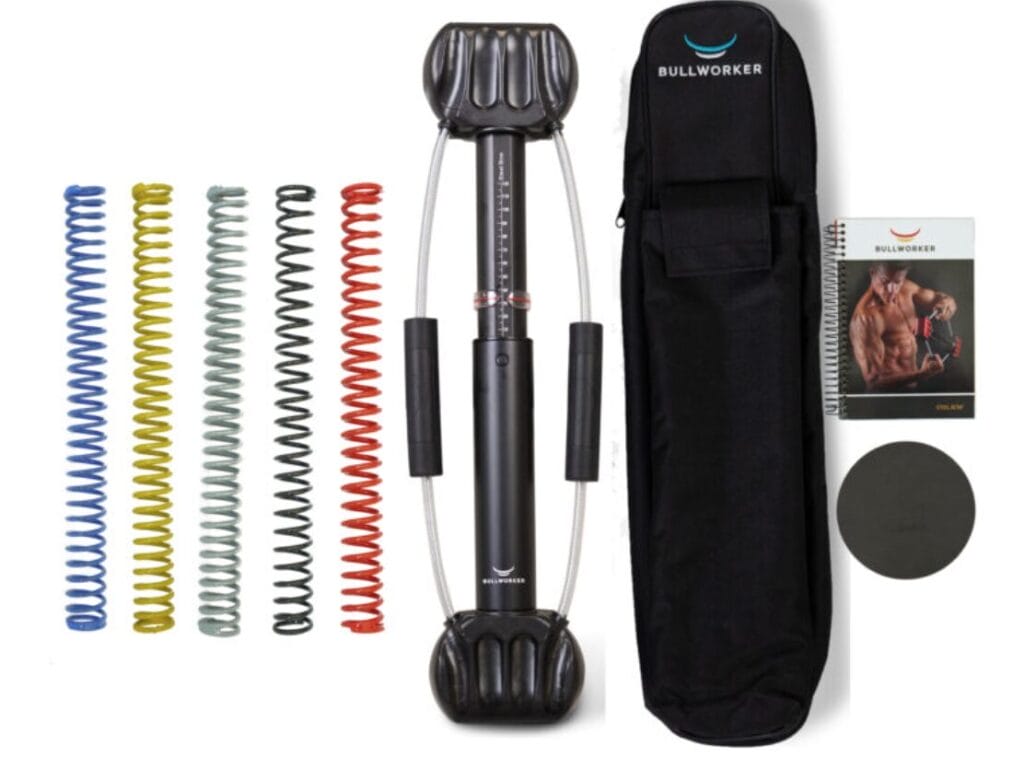
The Steel Bow is a smaller version of the Classic, designed to be more portable.
Some users complain that the smaller size makes it difficult to achieve full range on certain exercises, but you have to keep in mind it’s designed to be small on purpose.
At only 20″ long, you can easily throw it in a travel bag and hit the road.
Speaking of which, when it comes to exercising on the road, I’m of the opinion anything is better than nothing.
I don’t expect to get the best workouts of my life when I’m traveling, but the fact that I can always have a gym around when traveling is a huge perk.
Anyway, I’m getting ahead of myself – let’s take a look at what the Steel Bow has to offer.
Pros
- Very portable- allows you to workout while traveling or at work (or anywhere else)
- Well built, durable design
- Effective for improving strength
- Low impact
- Simple to use
- Lightweight
- Comes with exercise guide
- Free carrying case included
- 5 different resistance springs included
- Non-slip pad for added safety
- Great warranty
- Well priced
Cons
- Some exercises difficult to do because of small size
- Not great for leg exercises
Construction & Function
The Steel Bow utilizes the same general design of the Classic and the original Bullworker that came before it.
This means you essentially have a two metal tubes (aluminum) sliding inside one another with a spring between them (the resistance comes from the spring).
There are also two steel cables attaching the ends, allowing you to pull on the cables to work against the spring resistance as well.
The Steel Bow is only 20′ long and weighs about 2.5 lb, making it very easy to handle.
The handles at each end are molded for added comfort for your hands and there are removable handles on each cable as well.
There’s also a little slider gauge on the tubing that measures how far you’re moving with each exercise, giving you an indication of how much force you’re applying.
The numbers are etched onto the aluminum tube and they give you a convenient way to mark your progress as you get stronger.
Overall, the Steel Bow is a lightweight, simple device that’s easy to use, but that doesn’t mean it can’t kick your butt.
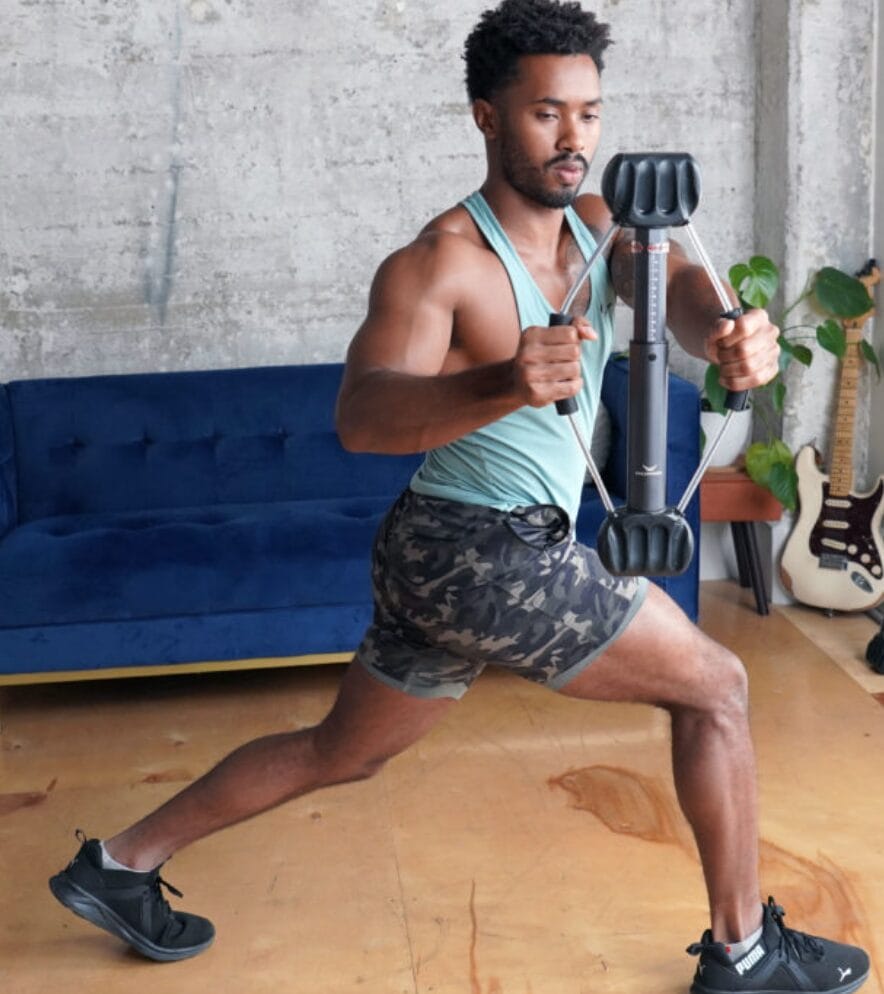
What’s Included
The Steel Bow is sold as a package that includes the following:
- Steel Bow
- 5 interchangeable springs
- 90 day workout guide
- Carrying case
- Non-slip pad (comes in handy when pushing the bow against the floor)
You basically get everything you need to start using the bow right out of the box.
Speaking of which, there’s no assembly necessary, it’s ready to go as soon as you open it.
The interchangeable springs come in the following resistances:
- Blue (level 1): 0 – 20 lb
- Yellow (level 2): 0 – 40 lb
- Grey (level 3): 0 – 60 lb
- Black (level 4): 0 – 80 lb
- Red (level 5): 0 – 100 lb
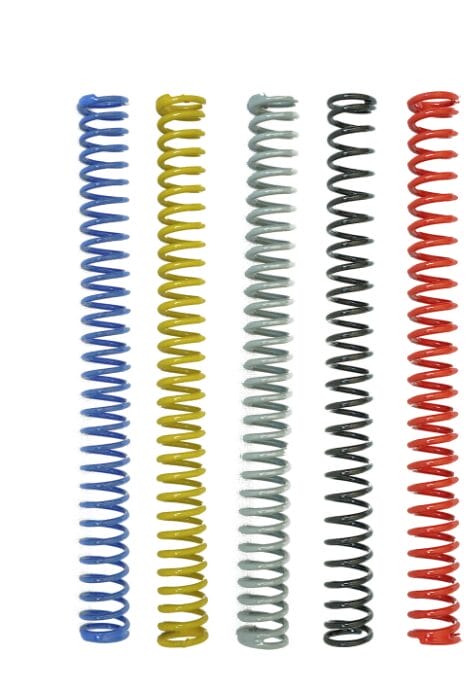
One hundred pounds is a lot of resistance for an isometric hold, so the Steel Bow can certainly challenge folks of all fitness levels.
Overall, I think Bullworker is generous with the accessories they include here. Everything you need to get start comes with the Steel Bow.
Exercises
Bullworker advertises that the Steel Bow can be used to get a full body workout.
Some exercises are obvious, like the isometric pec fly where you hold the bow in front of you can compress the ends, but targeting other body parts might not be quite as obvious,
Luckily, Bullworker includes a workout guide that shows you how to hit any muscle you want.
Bicep curls can be achieved by using the handles on the cables, lat “pulldowns” by compressing the bow against your leg or the floor, shoulders by compressing the bow above your head in any number of positions…
Think about it- all exercises really involve either pushing or pulling against something and the Steel Bow is designed to be pushed and pulled against.
If you’re struggling to come up with ways to work different body parts with this device, don’t worry – Bullworker shows you 30+ exercises you can do with it in the included manual.
You can check it out online here if you like to see examples.
The Steel Bow is pretty potent when it comes to upper body workouts and yes, there are leg exercises you can do, but it’s not well designed for many leg moves.
Hip adduction isn’t bad, but most of the other are kinda awkward.
The smaller size doesn’t offer as much variety as the larger Classic either, but that’s to be expected.
But again, this device is designed for travel.
It’s also nice that you can do most of these exercises sitting down.
As mentioned, the Steel Bow is designed with isometric exercises in mind, but you can also perform isotonic (concentric and eccentric) moves if you prefer.
If you read their manual and check out their workouts, you’ll notice that they actually suggest doing both – starting each exercise with a 7 sec isometric hold and then completing 10 normal reps.
And I can tell ya, holding some of these positions for 7 seconds isn’t easy.
Overall, in terms of exercise variety, the Steel Bow has plenty to offer, but it’s best suited at hitting the upper body muscles.
And keep in mind, with the small size, you might not always be able to achieve your full range of motion.
Warranty
The Steel Bow comes with the following warranty from Bullworker:
- 5 year warranty
- 90-day money back guarantee
A 5-year warranty is amazing for a product in this price range, where most max out at 1-3 years (OYO, Gorilla Bow, etc).
And a 90-day money back guarantee is pretty sweet to because it gives you a chance to try it out and return it if you’re not happy.
If you read the fine print though, it does say you have to keep your product for at least 30 days before initiating a return.
Either way, still a great guarantee.
Overall, Bullworker offers a great warranty here.
The Steel Bow vs The Bow Classic
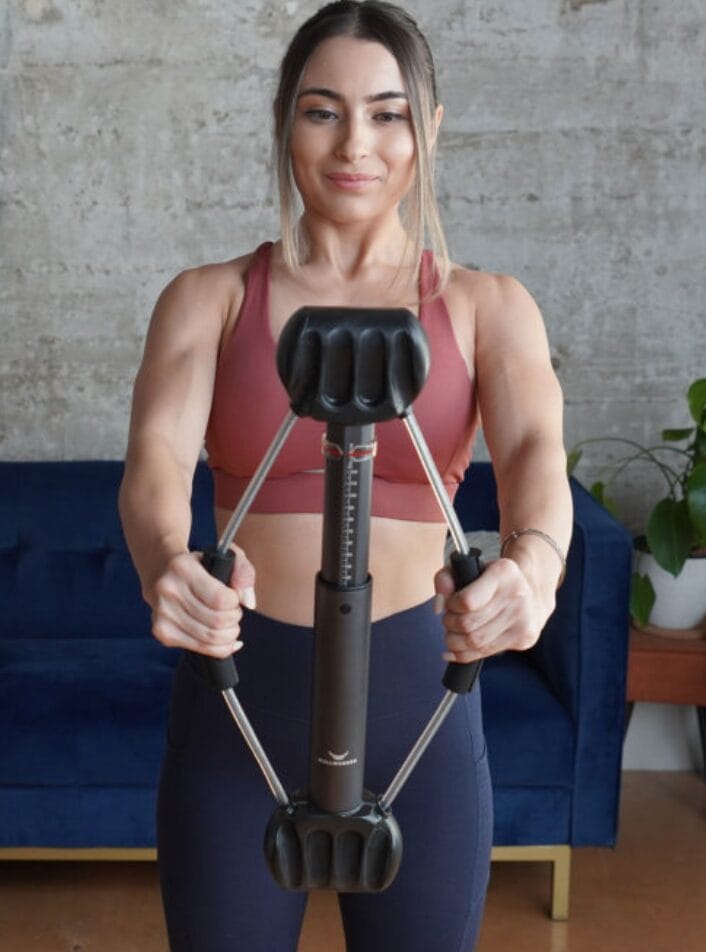
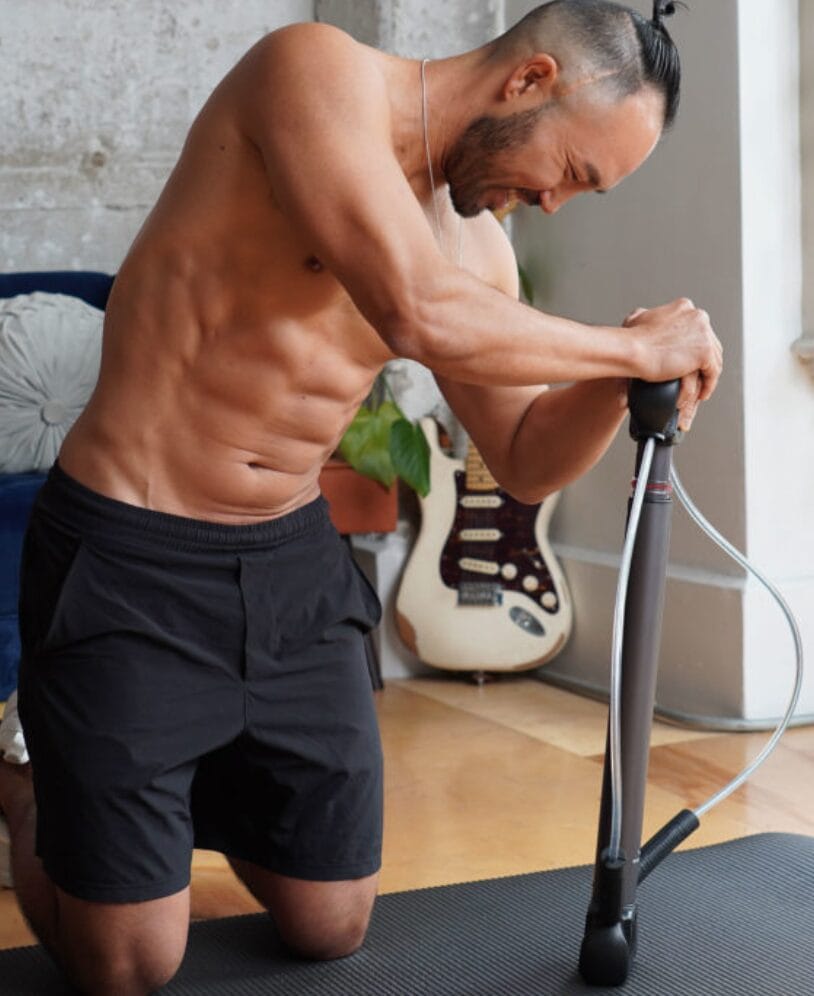
| Steel Bow | Bow Classic | |
| Length | 20″ | 36″ |
| Springs | 5 (0 – 100 lb) | 5 (0 – 150 lb) |
| Carrying case | Yes | Yes |
| Non-slip pad | Yes | Yes |
| Exercise guide | Yes | Yes |
| Price | ~$170 | ~$200 |
Bullworker likes to think of the Steel Bow as their dumbbell and the Classic as their barbell and I think that’s a pretty accurate analogy.
The Bow Classic works exactly the same as the Steel Bow – same sliding tubes, same cables, same spring design, however it’s larger and offers more resistance.
At 36″, the Classic is a good 16″ longer than the Steel Bow.
This added size offers more range of motion during exercises, making the Classic better suited for taller users and moves like deadlifts.
The Classic comes with 5 color-coded springs, but the resistances are a little different.
The Bow Classic comes with the following springs:
- Blue (level 1): 0 – 25 lb
- Yellow (level 2): 0 – 50 lb
- Grey (level 3): 0 – 75 lb
- Black (level 4): 0 – 100 lb
- Red (level 5): 0 – 150 lb
Overall, the Classic and Steel Bows are very similar, but the Classic is a larger version and can offer more resistance than the smaller Steel Bow.
And FYI, there’s only about a $30 difference in price as well.
Final Thoughts
Bullworker has been in the home fitness game for over 60 years and their bows really haven’t changed much in that time.
I think the fact that their products are still relevant today says something for the foresight behind that initial design.
And I’m a big fan of the old saying- “if it’s not broke, don’t fix it”.
And the Steel Bow falls into that category.
The biggest change Bullworker made with their updated version is that they made it smaller. The Steel Bow is designed for portability and as a portable strength training device it’s well equipped.
The Steel Bow is well-built, affordable, and very capable of helping you stay fit while you are away from home.
I think it would be a great idea to keep one in your desk at work even- great way to get a quick workout during your lunch break.
As I’ve mentioned before, with its size and design, it isn’t the best when it comes to leg workouts (it’s possible, but kinda awkward).
But otherwise, I think it’s easily one of the best portable gyms out there.
A true classic.
(affiliate link)

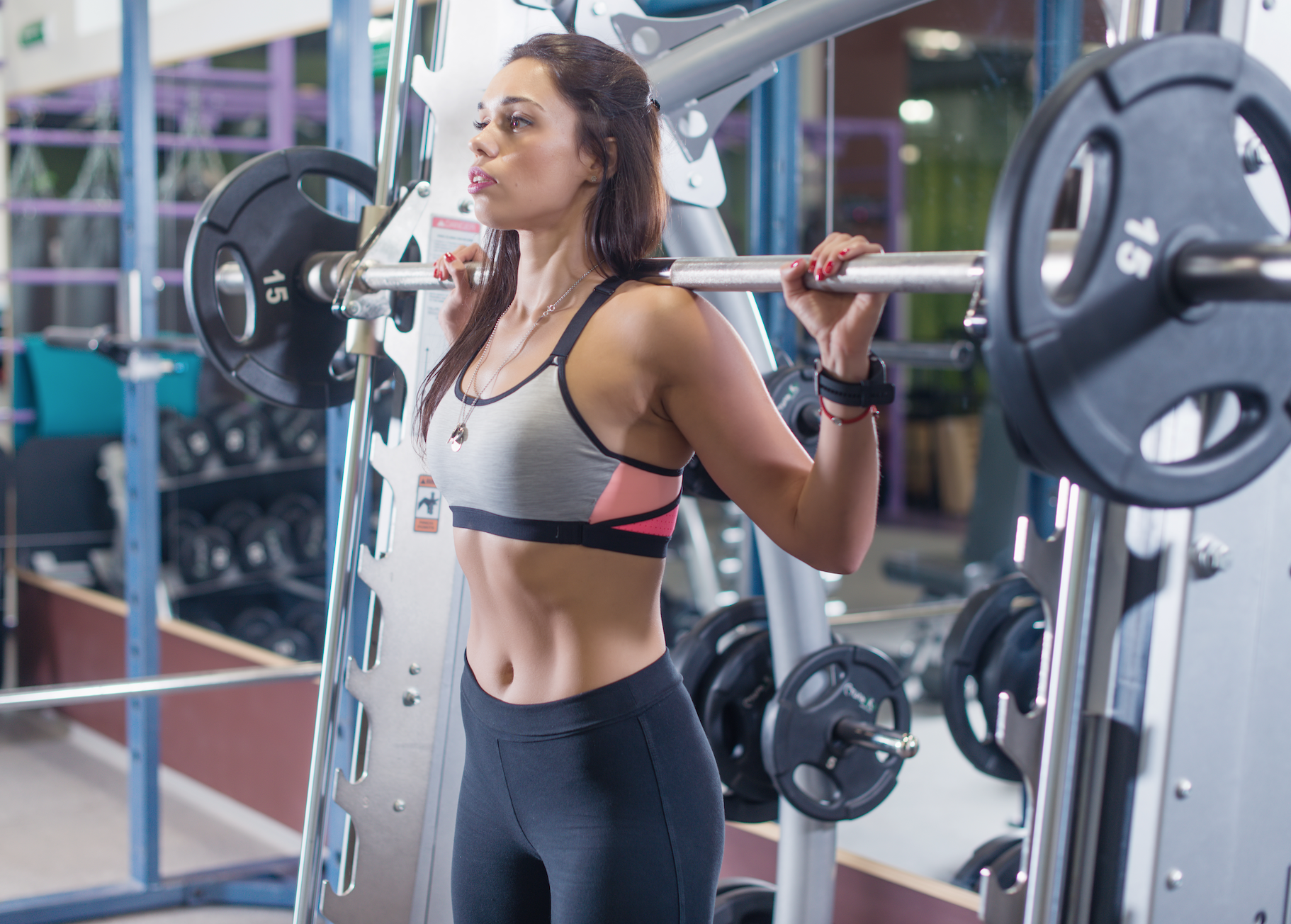
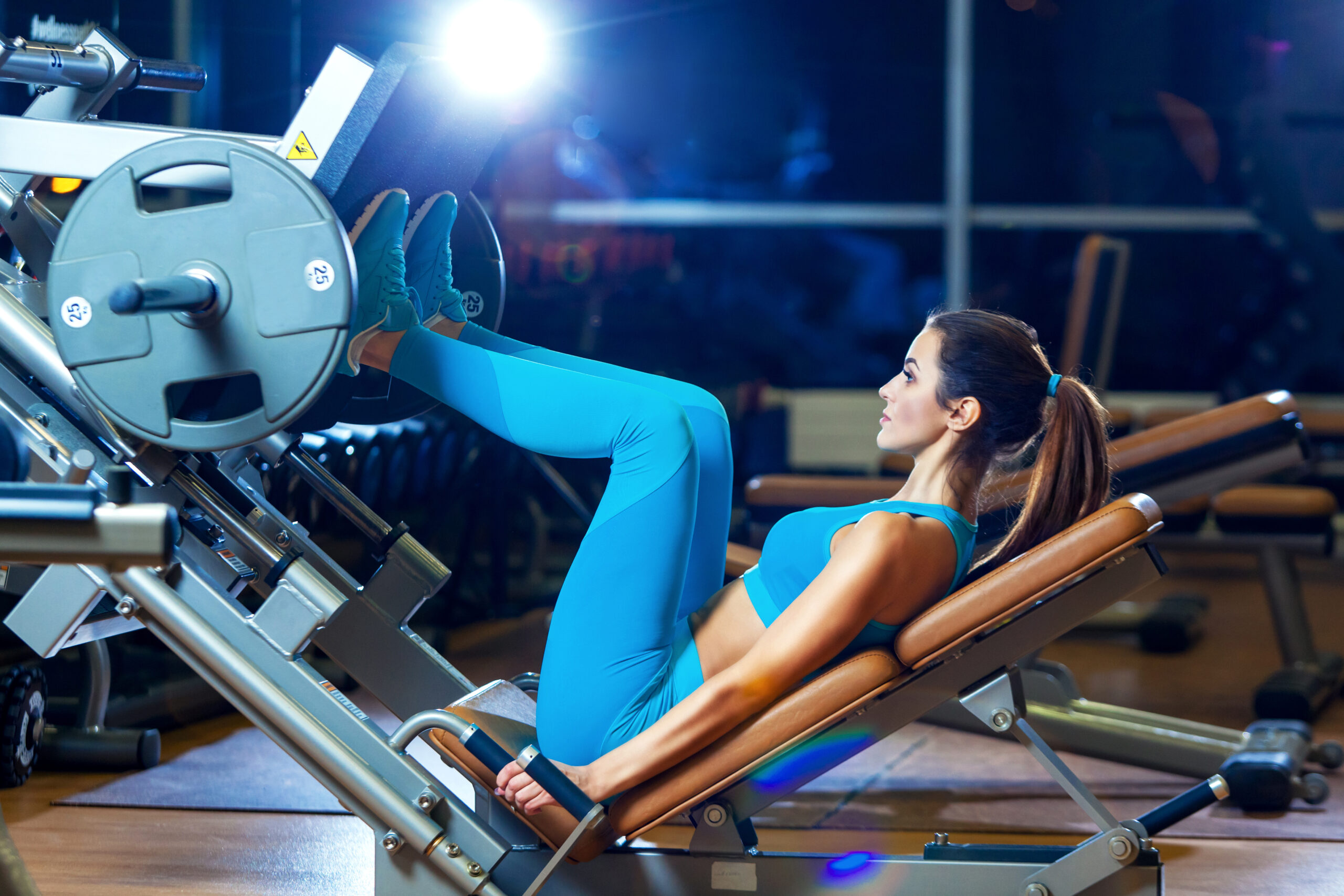
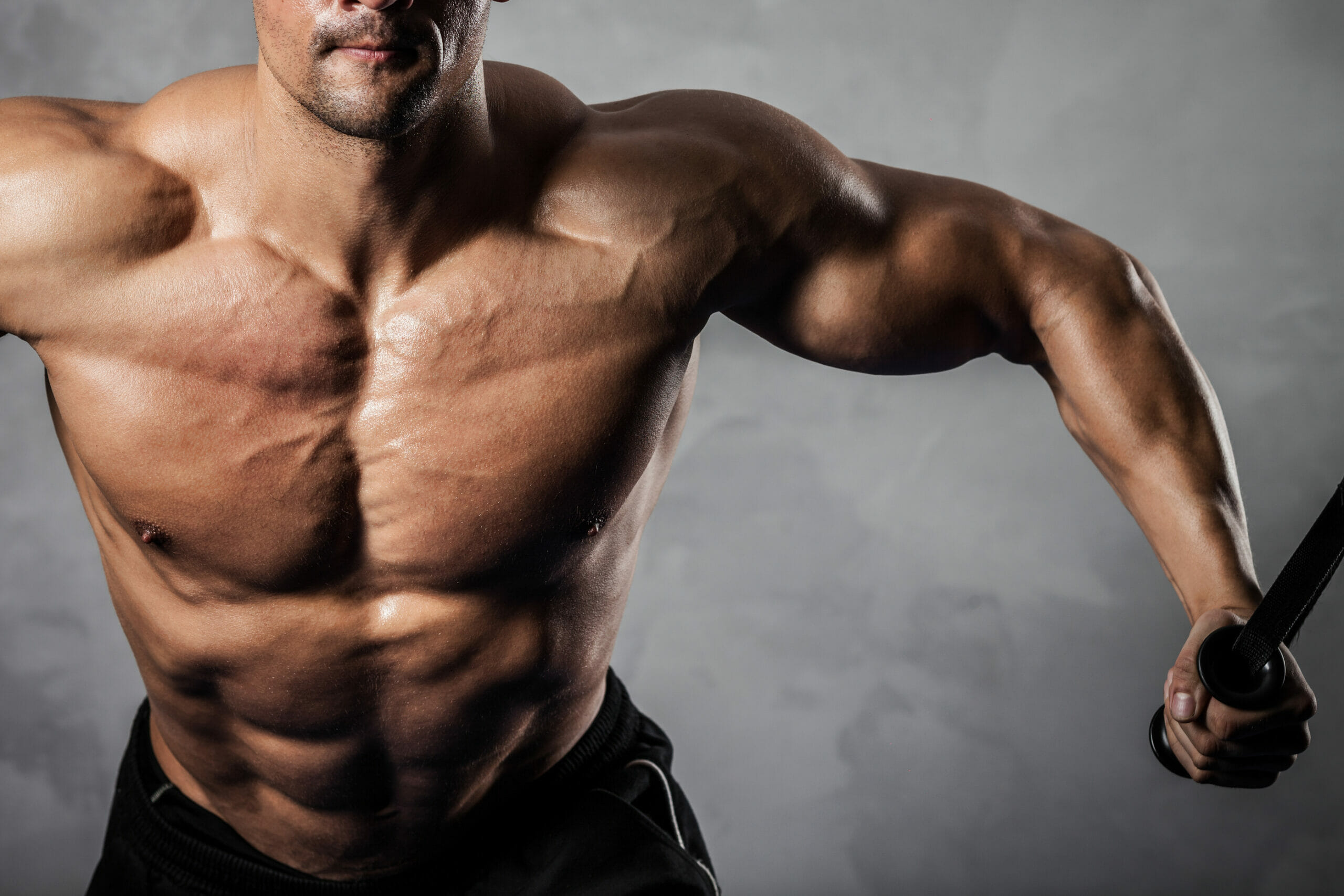
Have way too many Bullworkers! When I see one in excellent or nib condition for a pittance, my OCD kicks in. I bought one of the original steel bows to rehab after a rotator cuff operation resulted in a MERSA infection.
Having the option of changing the springs as you progress, was a life saver.Still have that steel bow as well as 2 of the newer ones. Started using BW in 1965. When I went to the service, my brother kept it at home. Have bought them in Japan,Alaska,Germany and back in the USA. Recently bought a NIB Tensolator with box,manual for $10. Best deal was at a flea market when a lady told me I could have a X5 NIB if I could tell her what it was for and also get her a bottle of water at the snack bar. I will be 75 next month and still use a BW at least 4x a week. Try this: take your blood pressure, perform a few isometric contraction exercises then, measure again. You will be surprised.
Oh man, that’s awesome! A bottle of water at the snack bar… that’s a great deal. Glad to hear you’ve enjoyed using Bullworkers over the years and thanks for sharing!
That should have read COPD not cold, predictve text. ?
Ha, that’s awesome man, I love hearing these stories about the Steel Bow. It’s amazing how this thing lasts over the years. Glad to hear you’re getting back on it and I hope it helps get you in shape with the COPD (I too have troubles with the auto-correct sometimes). Take care and thanks for reading!
I still have my original bullworker 2, purchased somewhere between 1976/78. I used it on a regular basis with great effect when I was younger. Now at 61 years of age and suffering mild to medium cold many exercises prove a little bit too much for me. So I have just dug it back out on Wednesday of this week and restarted using it. Feeling the effects straight away. Hopefully in a few months I may regain some shape. Obviously not expecting to have the shape I did 30 yrs ago, but a little bit of it would be nice.
I bought the steelbow a little over a month ago, and I love it! I had the original back in 1976, and it was the best way to get ripped without overtraining. Lost it along the way, and forgot about it as I was doing bodyweight and running for years. Recently got interested in tendon strength, and thinking they were out of business as they’re not exactly all over the internet, I searched for a used one and found they’re still around.
I’ve remained very active, but have mostly been doing a LOT of walking, so my upper body had suffered. Gained ten pounds of muscle so far. After you get used to it, it’s awesome for the entire body. It actually feels like cheating, as the routine is so quickly finished and you’re not exhausted afterwards. However, that’s very deceptive, and it’s easy to overtrain your CNS. But, that will adapt as well. I’m currently doing one set of many of the example exercises, plus a few of my own. Just extended the compression to 15 seconds at about half max force. Has already resolved all the aches and pains I’ve accumulated over the past 61 years of being a very active person. Redneck, paratrooper, skydiver, long distance runner, etc. My body is also in much better alignment now. Gains are far better than from any other type of exercise I’ve ever done, and I actually look forward to my workout now. The only downside is the plethora of conflicting data on isometric exercises. I’m just going for a 20 second compression at half force. Not doing the isotonic except for the abs.
That’s great to hear man, keep up the good work! Thanks for sharing and glad you enjoy using your Steel Bow.
Been using it occasionally since the mid 1970s. Recently moved to Canada and am thinking of buying the 20” bow…
Much prefer the Bullworker over the Isokinator. It’s much more versatile. However, both are seriously expensive at this time. So many people now training at home. I’d say save your money and just use one of the many training guides that are out there. Much cheaper and just as effective with some effort and the right frame of mind. Thanks.
I’ve used Bullworker -off and on since1972.
Back in the day Bullworker was in Middlesex,New Jersey.An honest company,everyone could own one.
I’ve bought several steel bows since hey started.
It seems steel bow goes up about $50.00a year.
It nauseated me to realize it’s all about corporate money now.
Steel bow u stink
You will never be like the original Bullworker2
Plus there are all sorts of cardio exercises that you can develop with no compression what so ever. I have a damaged lung and this addition has improved my life no end. I use it from squat and carry through to overhead as if lifting weights also as if paddling a kayak and many many other variations. I too have had mine actually have 3 since the 1970’s. One of the best bits of equipment ever.
glad to hear it. yeah it’s pretty amazing that such a simple piece of equipment can be so effective.
I’m surprised to still see this around. I have my Bullworker that I bought in 1969, I was 14 years old. I used it a lot then to build my chest and arms muscles and have used it off and on over the past 50 years. I’m getting old and starting to acquire man boobs. LOL so I thought I would start using it again to tighten things up a bit. Just got online to see if I could find the workout routine and sure enough. This is one of the best and easiest devices I have ever owned for keeping in shape. I paid $39 for mine out of a mail order catalog, yeah, 50 years ago.
haha, I love it man, that’s awesome. Just goes to show serious exercise equipment never goes out of style. thanks for sharing.
Awesome. My older brother let me train on his back in the 70s. I still remember the poster it came with, trying to smile like the model while killing myself. In 4th grade beat everyone in my class arm-wresting except the teacher. Sister Ann wasn’t gonna lose to any 4th grader!
Ha, I love it man, thanks for sharing.
Hilarious. I needed a few laughs in these times. Thank-you for sharing.